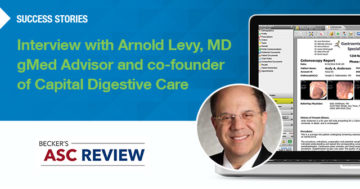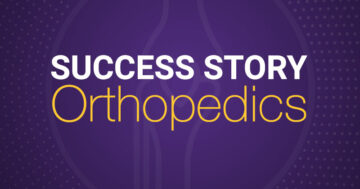Is Billing Confusion Costing Your Practice? 4 Ways to Help Simplify the Payment Process.

What if you could get paid in five days?1 Address the friction points that get in the way of successful payments.
A staggering 67% of consumers are confused by their medical bills.2 That lack of clarity isn’t just a patient-experience issue — it’s a threat to your bottom line.
When patients hesitate to pay for charges they don’t understand, it stops payments in their tracks. The result? Suddenly, your team is fielding more calls, and write-offs start to stack up.
Simply put: A confused patient is not a quick payer. But by strategically addressing key friction points, you can help make the payment process easier, speed up collections and even reduce financial risk for your practice.
Clear the way to Invoice Paid
Speeding up your collections isn’t about sending more reminders or making the Pay Now button on your payment portal bigger. Real change and faster payments come from reducing obstacles along the path to Invoice Paid. Use these four strategies to start streamlining payments at your practice.
1. Increase patient understanding with itemized eStatements
Some digital payment flows only display the patient’s total balance. For instance, when a patient receives a message that says, “You owe $250,” they might wonder what they’re being charged for, call the office with questions or simply refuse to pay a bill they don’t recognize.
A better approach is to electronically deliver a transparent, itemized eStatement that allows patients to view visit-level details, billed charges, insurance adjustments and balance due, all in one place. Easy-to-read statements can help build patient trust and reduce delays at this critical point in the billing cycle. Full transparency is impactful — it can increase conversion by over 20% compared to traditional Text-to-Pay.1
2. Boost practice efficiency by going digital first
A paper-based billing cycle is a major source of administrative drag. It consumes valuable staff time, from printing and stuffing envelopes to handling returned mail. Even with digital tools, practices may still rely on paper too early in the cycle, unnecessarily increasing costs and manual work.
By contrast, a digital-first billing cycle helps streamline collections while also reducing administrative burden. Practices that delay paper statements make the most of faster and more efficient digital channels to handle the initial work. A digital-first workflow can help reduce tedious tasks, allowing staff to focus on other priorities while using paper as a fallback, not as the first resort.
3. Drive patient engagement with a text-first approach
For 79% of providers, it takes two or more statements to collect a patient balance in full — it’s clear there’s room for improvement.2 Rethinking how bills get delivered could help solve this problem, especially when you consider common issues like low use of payment portals or emails that get lost in spam. Even the most transparent digital bill is useless if the patient never sees it.
Instead, meet patients where they already are: on their phones. A secure two-way message is a great way to capture your patient’s attention. Send a single message that directly links to their detailed eStatement, creating a low-hassle path to payment. This combination is highly effective, with an average patient pay timeline of 5 days.1
4. Reduce risk by only paying vendors for successful eStatements
What if you invest in a new digital billing platform, and it doesn’t work as expected? This could be a major financial risk. Unlike other platforms that charge per paper statement, a success-based pricing model means you only pay when a payment is successfully collected via eStatement.
This approach is a win for your bottom line. It aligns with practice financial goals, helps reduce risk and drives ROI because you’re paying for a successful result, not just an attempt. There are no fees for unengaged digital billing attempts. Your vendor only wins when you win too.
Stop chasing, start converting
Shortening your patient collection window isn’t magic; it’s a strategic process of reducing friction. By resolving confusion with transparency, tackling costs with a digital-first workflow, engaging patients through a trusted text-based channel and reducing risk with a success-based model, you can go from chasing payments to getting paid.
Learn how eStatements, as part of our comprehensive Patient Collaboration solutions, can help create a better patient experience and a healthier practice.3 Stop letting collection cycles of 30+ days cut into your bottom line — schedule a demo today.
1 Based on data gathered from limited beta testing; actual practice figures may vary.
2 J.P. Morgan Payments. “15th Annual Trends in Healthcare Payments Report.” J.P. Morgan. 2025.
3 Requires ModMed® Pay
This blog is intended for informational purposes only and does not constitute legal or medical advice. Please consult with your legal counsel and other qualified advisors to ensure compliance with applicable laws, regulations and standards.







